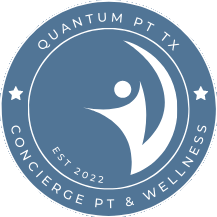Dizziness and Concussion

Are You Feeling Hindered by Dizziness or a Concussion?
Have You or Someone You Know Been Experiencing Concussion Symptoms for an Extended Period?
Are you having difficulty concentrating, reading, using electronic devices, walking, exercising, or playing sports due to symptoms like dizziness, nausea, blurred vision, or poor balance?
Through our extensive research, we have identified six distinct types of concussions in athletes. While each patient typically fits into one primary profile, it is common for two or three profiles to be intertwined. These six profiles include cervical (neck), mental/fatigue, eye/vestibular, head/headache, and emotional/mood. At Quantum PT and Wellness, our experienced therapists can provide efficient and effective care by first identifying the appropriate profile for each patient.
When developing a patient’s concussion profile, we take into account their personal narrative, medical history, and current symptoms. Merely recognizing the signs and symptoms is not enough; a thorough physical examination is essential. Our comprehensive orthopedic assessment evaluates the range of motion, pain tolerance, and voluntary control of the cervical spine.
Once we have determined the patient’s specific profile, we can begin effective treatment. Extensive research has shown that resting and inactivity are no longer considered productive approaches to allowing the brain to heal on its own after a concussion. Dimming the lights, avoiding stimulation, and resting are no longer recommended strategies. Instead, concussions are actively treated using current methodologies.
Common Symptoms We Address:
- Ocular symptoms: These include visual impairments that affect the eyes.
- Vestibular symptoms: This encompasses dizziness, including a specific type called BPPV (Benign Paroxysmal Positional Vertigo).
- Cranial symptoms: Headaches, including tension headaches, migraines, and sensitivity to light fall under this category.
- Vestibular symptoms: This includes mental and physical exhaustion that can be attributed to vestibular issues.
- Sleep difficulties: Problems with initiating and maintaining sleep are addressed.
- Cognitive issues: This involves difficulties with focusing, recalling information, and making judgments.
- Emotional symptoms: These include a lower-than-average tolerance for frustration and irritability, feelings of melancholy, and occasional panic attacks.
Concussion Rehabilitation: A Step-by-Step Approach
- Assess and identify the primary symptoms and impairments caused by the concussion experienced by the patient.
- Develop a customized rehabilitation plan that focuses on addressing specific deficiencies based on the patient’s concussion profile. This may involve implementing targeted exercises, such as mobilization techniques for the neck, balance exercises, vestibulo-ocular retraining, and an aerobic exertion program. Additionally, guidance may be provided on strategies for rest, stress management, maintaining hydration, and optimizing dietary intake.
- Gradually reintegrate exercise and sports activities based on the patient’s symptoms and individual response. The pace of reintroduction will be determined by closely monitoring the patient’s progress and adjusting accordingly.
Want To Get Relief Faster?
Choose which option works best for you
6am – 8pm
